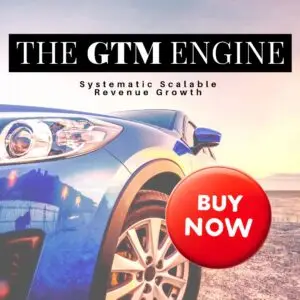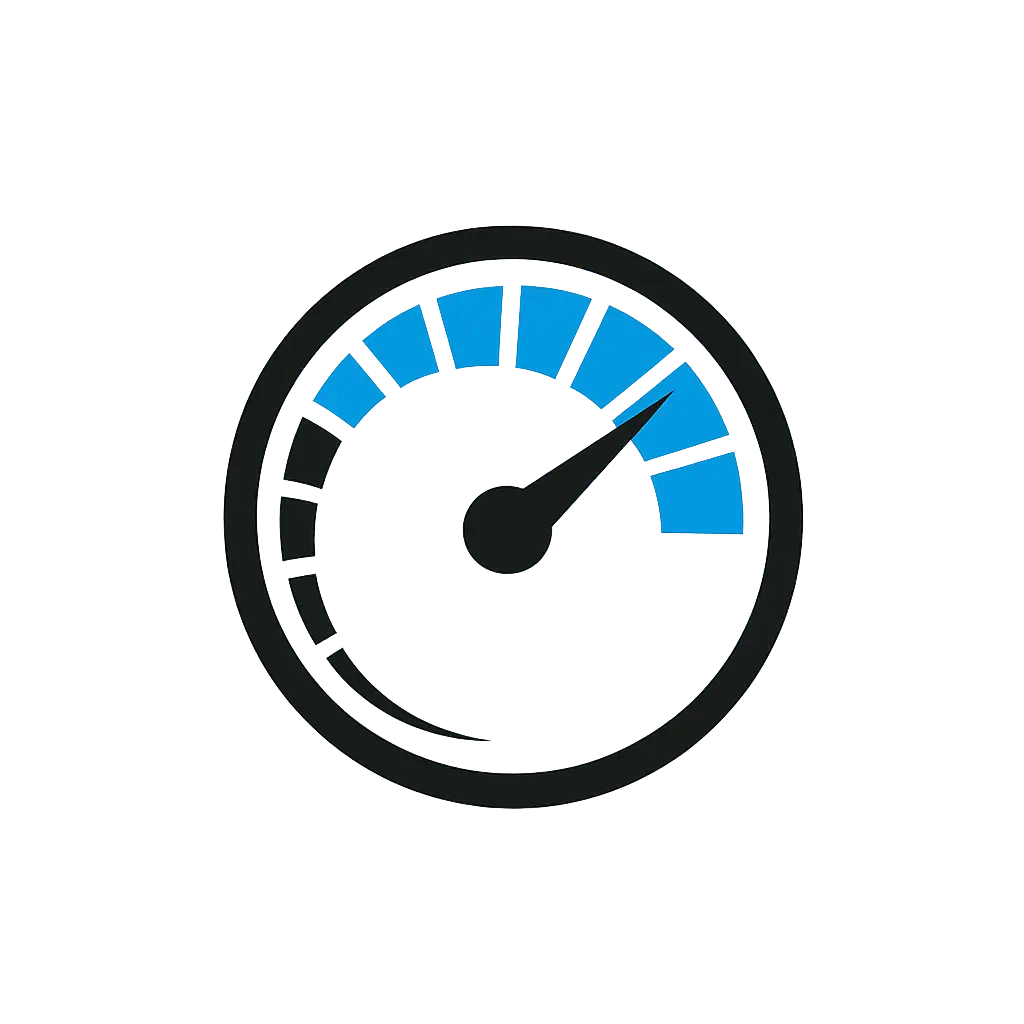- What causes founder burnout during early-stage growth?
- Why doesn’t hiring more salespeople solve founder burnout?
- How can I scale go-to-market without being in every deal?
- What is a GTM engine?
- What are signs I need to step back from sales as a founder?
- How can VCs help prevent founder burnout in their portfolio?
- TL;DR
- Intro: The Trap That Leads to Founder Burnout
- What Is The Root Cause of Founder Burnout
- The False Hope of “Hiring Your Way Out”
- What a Scalable GTM Engine Looks Like
- The Mental Shift: From Founder-as-Doer to Founder-as-Strategist
- Proof It Works: How This GTM System Scaled bitcoin++
- Final Thought: You Don’t Need More Grit. You Need a GTM Engine.
- Founder Burnout & GTM FAQs
TL;DR
Founder burnout doesn’t come from working hard—it comes from trying to scale without a system.
This article breaks down:
✅ Why hiring reps without a GTM engine almost always backfires
✅ The 4 essential components of a scalable, founder-free sales process
✅ How one founder went from burnout to 3x revenue and 60% close rates
✅ What VCs and founders can do today to avoid the Hail Mary Sales trap
If you’re tired of being the only one who can close deals—this is for you.
Intro: The Trap That Leads to Founder Burnout
A founder I spoke with recently told me something that stuck.
He had acquired an AI product about a year ago. Since then, he’s poured everything into growing it—acting as CEO, CRO, and CTO all at once. He’s marketed it. Sold it. Managed the engineers. Led customer support. All while chasing aggressive B2B growth goals.
And to his credit, he’s made progress: from zero to over 150 users and $100K in ARR in under 12 months.
But when I asked him what his sales training or onboarding looked like, he laughed.
“Training? Playbook? There is none. It’s just me.”
That moment said it all.
He’d tried to scale by hiring salespeople. But without a repeatable system or enablement in place, they flailed. They didn’t know what to say, who to target, or how to position the value. Eventually, he let them all go.
And now he’s right back where he started—closing every deal himself. Running every department. Carrying the full weight of the business.
This is the classic founder trap.
You know you need to scale… so you hire headcount to replicate what you do. But what you’re really doing is hiring without a system.
And when you try to scale without a GTM engine, the results are predictable:
- Burned out founders
- Ineffective hires
- Zero ROI on new headcount
- And a business that still depends on you to survive
Eventually, that pressure breaks something.
This article is about how to avoid that moment—by building a go-to-market system that scales, even when you step away.
What Is The Root Cause of Founder Burnout
People Also Ask:
- What causes founder burnout during go-to-market?
Most people assume burnout is caused by overwork. Too many late nights, too many Zoom calls, too much pressure.
But for founders, that’s not the real reason.
Founder burnout doesn’t come from working hard—it comes from carrying everything.
The strategy. The sales. The pitch. The roadmap. The fundraising. The fire drills.
You’re not just wearing multiple hats—you’re the only person who can wear them.
That’s not heroic. It’s unsustainable.
🚩 You’re the System—And That’s the Problem
Early on, this founder-led approach works. You know the product. You know the customer. You can improvise, adapt, and win deals on instinct. You are the sales motion.
But here’s the trap: you never stop to systematize what you’re doing.
Instead, you hit a growth ceiling—and try to solve it the way many do: you hire people.
But if there’s no defined ICP…
No standardized messaging…
No discovery process…
No training or assets…
Then you’re not hiring to scale.
You’re hiring to replicate yourself.
And that’s where burnout accelerates. You’re stuck onboarding. Coaching. Cleaning up. Losing confidence in your team—and yourself.
🧨The “Hail Mary Sales” Trap
I call this the Hail Mary Sales approach:
“We’re growing. I’m tired. Let’s just hire a couple salespeople and see what happens.”
What happens is usually:
- 🚫 Poor pipeline quality
- 🚫 Low close rates
- 🚫 Disillusioned reps
- 🚫 Founder still doing the closing
All while headcount and burn go up.
And now you’re not just closing deals—you’re managing failure.
Burnout isn’t looming. It’s here.
The False Hope of “Hiring Your Way Out”
People Also Ask:
- Why doesn’t hiring more salespeople fix founder burnout?
- Does scaling require adding headcount?
When the founder is overwhelmed, the knee-jerk solution is usually:
“Let’s bring in salespeople to lighten the load.”
But without a system in place, this move doesn’t free you up—it pulls you deeper in.
Founders Don’t Scale—Systems Do
That founder I spoke with had already tried this.
He hired a few reps to help take things off his plate. But after a few months, they were underperforming and confused.
When I asked what he gave them to succeed, he admitted:
“There was no training. No playbook. Just me.”
That’s the root issue.
Founders hire people and expect them to just know how to sell like they do. But founders have context, instinct, and a million at-bats under their belt. Reps don’t.
Without a clear ICP, battle-tested messaging, and a discovery process, most reps don’t stand a chance.
They either:
- Burn out themselves
- Get frustrated and leave
- Or worse, they stay… and underperform
💸 The Expensive Reality of Sales Rep Failure
Let’s talk numbers.
- The average VP of Sales tenure is 18 months or less
- AE ramp times often exceed 6 months in complex B2B sales
- Cost of failure? Easily $300K+ per bad hire once you factor in comp, tools, and lost deals
- Founders report spending 50–70% of their time coaching, supporting, and rewriting deals in these cases
So what starts as a hopeful delegation move ends in regret—and deeper burnout.
⚠️ The Realization Hits
The founder is still closing every deal.
Still rewriting every deck.
Still fielding every objection.
And now?
They’ve added headcount and pressure… but not growth.
This is where many founders lose confidence.
Not in the product—but in their ability to scale it.
That’s the turning point.
Next up: we show the way out.
What a Scalable GTM Engine Looks Like
People Also Ask:
- How do you build a go-to-market engine that runs without the founder?
- How do I get more efficient at selling?
- What does a systematic sales process do?
Burnout isn’t inevitable. But escaping it requires a mindset shift:
Stop trying to scale yourself.
Start scaling a system.
A real go-to-market engine is not just a team of sellers.
It’s a repeatable, measurable process—one that’s powered by shared messaging, shared assets, and shared ownership.
And yes, you can build one even if you’re still early-stage.
🔑 The 4 Core Components of a Scalable GTM System
Here’s what that engine looks like under the hood:
1. A Sharply Defined ICP
Your team should know exactly who your best-fit customers are.
Not “tech companies” or “marketing leaders”—but role, pain, buying trigger, and decision patterns.
🎯 If your reps don’t know who to prioritize, they’ll waste time and lose confidence.
2. Voice-of-Customer Messaging
Your value prop should speak to real, felt pain—not abstract features.
And it needs to be delivered through:
- A compelling Founder Story (the “why we exist”)
- A relatable Customer Story (pain → impact → resolution)
- A tailored Elevator Pitch that shifts by audience (prospect, investor, or random coffee shop encounter)
🗣 This is where storytelling meets clarity—and it’s the foundation of conversion.
3. A Repeatable Discovery Process
Discovery isn’t just a conversation—it’s a system.
Reps need to know how to:
- Identify pain early
- Frame ROI clearly
- Guide the buyer through decision-making
- Avoid premature demos or feature dumps
🎥 Bonus: record and transcribe great founder calls as training content. It’s gold.
4. Sales Assets That Scale Beyond You
If you had to step away today, what would your team have?
At a minimum:
- A sales brochure that nails the pitch
- A deck with VoC-aligned pain → benefit → ROI flow
- Case studies that prove you can deliver
- Enablement docs that map objections and next steps
These assets let you scale insight, not just effort.
🧰 Together, These Tools Turn the Founder into a Force Multiplier
You don’t need to disappear from the sales process.
But you do need to stop being the bottleneck.
A real GTM engine:
- Aligns your team
- Educates your buyers
- Builds confidence in your process
- And frees you to work on the business—not inside every deal
The Mental Shift: From Founder-as-Doer to Founder-as-Strategist
People Also Ask:
- How can founders step back without losing momentum?
The hardest part of scaling isn’t building a process.
It’s letting go.
Most founders build their companies on hustle.
That hustle becomes identity:
“If I’m not in every deal, we’ll lose.”
“No one can sell it like I can.”
“My customers expect to hear from me.”
At first, that’s true.
But if it’s still true a year from now—
You don’t have a company.
You have a job that only you can do.
🪞 The Real Risk Isn’t Delegation—It’s Dependency
Founders worry that stepping back means giving up control.
But the real danger is building a business that can’t function without you.
That’s not control. That’s captivity.
It’s also what burns out your team.
When reps don’t have clear direction, messaging, or autonomy, they flounder.
They rely on you for every answer.
And you end up babysitting a sales org instead of leading a business.
The outcome?
No one grows. And eventually, everyone goes.
🌲 You Can’t See the Forest When You’re Stuck Looking Through the Trees
That founder I spoke with wasn’t struggling because he lacked grit.
He failed to scale his GTM because he lacked altitude.
He needed someone outside the whirlwind—
Someone who could map the system while he ran it.
If you are stuck, feeling overwhelmed, don’t fret. Change can happen when you ask for help.
If you feel stuck, the solution probably isn’t another all-nighter.
It’s perspective.
And systems.
And space to breathe.
Proof It Works: How This GTM System Scaled bitcoin++
People Also Ask:
- What does a successful GTM system look like in action?
The first time this full GTM system came together wasn’t at a tech unicorn.
It was at a small, niche developer conference series: bitcoin++.
I built the GTM engine from the ground up:
- Messaging grounded in founder and customer stories
- Targeted outreach based on clear ICP insight
- A simple but effective Champion Package—even if it was just a 5-page brochure
- And most importantly: a repeatable, founder-free sales process
The results?
📊 3x year-over-year revenue growth
📈 2x increase in average deal size
⚡ Sales cycle cut in half
✅ 60%+ close rates across all sponsor tiers
No massive SDR team. No expensive tech stack.
Just buyer-centric storytelling, systemized discovery, and messaging that resonated.
This wasn’t just a win—it was validation.
And the playbook behind it?
It’s now the same foundation I use to help other founders escape burnout and scale with confidence.
Final Thought: You Don’t Need More Grit. You Need a GTM Engine.
People Also Ask:
- What does a successful GTM system look like in action?
If you’re a founder feeling stretched thin…
If you’re hiring reps who aren’t producing…
If you’re still in every deal and can’t step away—
You don’t need to push harder.
You need a system that works when you’re not in the room.
That means:
- A defined ICP
- Voice-of-Customer messaging
- Story-first assets and discovery
- A process others can follow (and win with)
It’s not about removing you from the business—it’s about removing the dependency on you.
👥 If You’re a Founder

Download The GTM Engine Blueprint or schedule a free discovery call to see how we can help you build a system that scales with (and beyond) you.
💼 If You’re an Investor
Let’s talk about how this playbook can support your portfolio companies—before burnout stalls their growth. Book a call and let’s align their hustle with a scalable GTM engine.
Founder Burnout & GTM FAQs
What causes founder burnout during early-stage growth?
Founder burnout often comes from doing too much for too long—especially when the founder is the only one who can sell, pitch, or explain the product. Without a repeatable GTM system, every deal depends on them, which leads to exhaustion and stalled growth.
Why doesn’t hiring more salespeople solve founder burnout?
Hiring salespeople without training, messaging, or enablement is like dropping them into the ocean without a map. Even great reps will struggle. Founders often try to clone themselves instead of scaling through systems—and it rarely works.
How can I scale go-to-market without being in every deal?
Start by codifying your knowledge: messaging, ICP, discovery process, and sales assets. Then, build a repeatable process that others can follow. This turns your experience into a system, not a bottleneck.
What is a GTM engine?
A GTM engine is a repeatable, scalable system that aligns your messaging, sales process, and customer understanding—so your business can grow without relying on the founder’s personal effort in every deal.
What are signs I need to step back from sales as a founder?
If you’re closing every deal, onboarding every customer, and training every rep—and you’re burning out in the process—it’s time to build a GTM engine that others can run.
How can VCs help prevent founder burnout in their portfolio?
Encourage early investment in GTM systems, not just headcount. Fund messaging development, sales enablement, and outside support to build the infrastructure for scale—before burnout takes a toll.


Leave a Reply